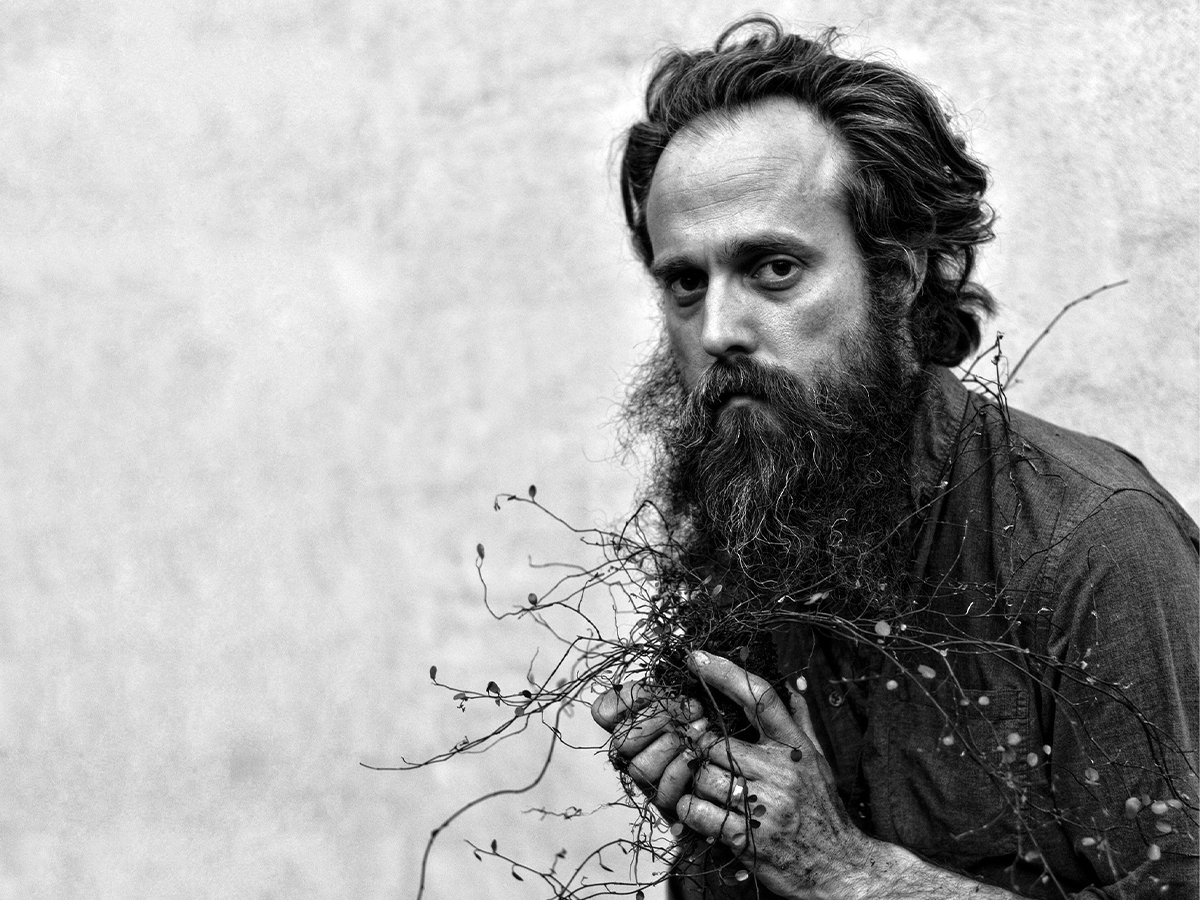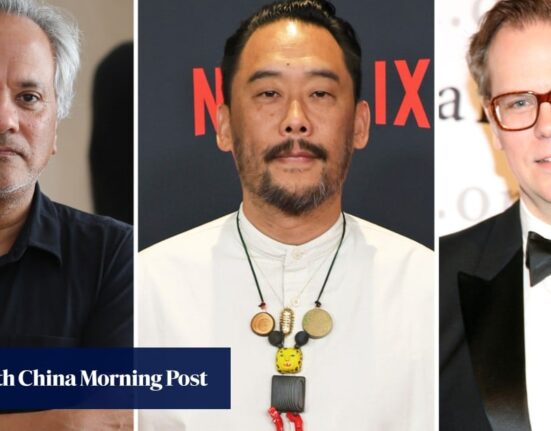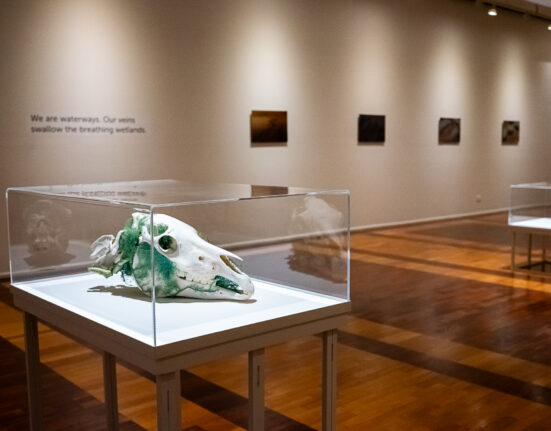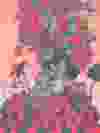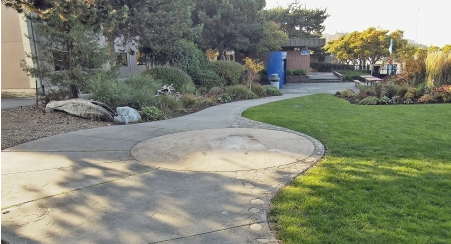Sam Beam, Recent Visual Works | Through Sunday, Jan. 28 | Peel Gallery, Carrboro
Last week, Sam Beam found himself in an unfamiliar though not entirely unexpected position: holding court at his own art opening. Best known as the singer-songwriter behind Iron & Wine, Beam, who lives in Durham, spent much of his life pursuing the visual arts.
He studied painting in college, got a graduate degree in film, then worked as a professor at Miami International University of Art & Design, teaching film and cinematography, before quitting to tour in support of his 2004 album, Our Endless Numbered Days. Music was just a hobby that accidentally took off—a plan B, maybe even a plan C, that became plan A.
Sam Beam, Recent Visual Works, on view now at Peel Gallery in Carrboro, is the latest expression of Beam’s seemingly inexhaustible creative drive. The show is small but vibrant. Filling two walls are several dozen black-and-white paintings of a serpent tangling with two nude figures—“Snake Dance,” Beam calls the series. More works hang from the ceiling: colorful collages of jumbled animal forms and mesmerizing quilts that Beam made from painted cardboard.
Soon after the opening, Beam left for Los Angeles to promote Who Can See Forever, a new film about his life and music. He spoke with the INDY by video call about making and breaking patterns, wearing many hats, and feeling jealous of animals.
INDY: This show at Peel was your first exhibition of visual work outside of your album covers, right? Tell me a little bit about how that came about.
SAM BEAM: [Peel’s owner Lindsay Metivier] had someone scheduled, and something happened where they couldn’t do it, so she had a hole in the calendar. They called me up to see. At first, I was like, “I don’t have time.” And then, you know, I’m glad it all worked out.
That’s funny, I was gonna ask, “Why now?” It sounds like it was a bit of a coincidence.
Sometimes I just need somebody to kick my ass and get me in gear, because there was never going to be a right time. Sometimes the opportunity comes up and you just jump for it.
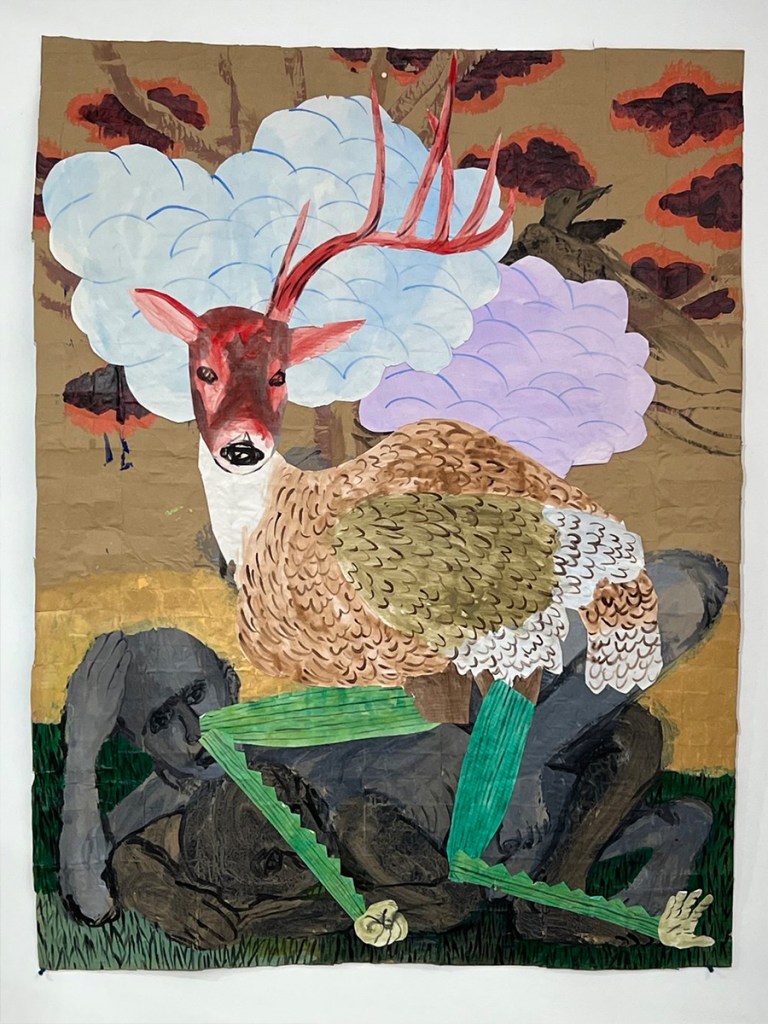
You’ve been making art—visual art—for a long time. Can you tell me about your background in drawing and painting?
I’ve been drawing ever since I was a little kid. That was always my happy place, up in my room with my drawing paper. Did it all through school, went to art school thinking I was gonna be a painter, got into photography and filmmaking, and then went on to do that stuff—and was always just doing music as a hobby, honestly. I mean, I feel like it was much more a surprise that I ended up pursuing music than it was pursuing art.
You describe drawing and painting in your artist’s statement as a “meditative practice.” How does that complement your music-making?
I have a certain amount of creative energy that has to come out somewhere. You either put it towards painting, or drawing, or whatever art you’re making—or music. Whatever your day says that you have time to do. Specifically, I’ve been [making art] while I’m on tour. You end up with a lot of downtime on tour, waiting around, and so it’s been great to have something to do that I enjoy.
The “Snake Dance” piece wasn’t really about drawing people; it was about drawing shapes and getting lost in the patterns, doing several of them, and developing the style of it. It became something that I could repeat and, like I said, find variations in. Some are more painterly, some are more sketchy. But it’s a similar thing that I do with music. You stumble into a phrase or a melody, and you sit with it and keep working at it and working at it until you find some song that you’re eventually OK with walking away from.
All the works in the show engage in pattern and repetition in some way. What’s the draw there for you? Is pattern-breaking something you also think about in music?
Definitely, yeah. You’re trying to find a framework, a series of chords, and then you try to find ways to balance the uniformity [with] moments of improvisation—moments of breaking the pattern in interesting ways. Visual art works similarly, especially the stuff that I have in the show. You know, the quilt pieces—I mean, my mom made quilts, and I love that tradition. It’s often very hard-and-fast rules of patterning and design. But in making the cardboard quilts, you can kind of break [the pattern] up.
Maybe there’s some similarity between the tradition of quilting and the genre of music that you tend to work in. There’s a deep tradition with certain ways of making patterns or telling stories, and you seem interested in taking that tradition and doing something else with it.
Definitely. I mean, it’s always a balance. Enjoying, celebrating the tradition, but also pushing, nudging it along—or trying to.
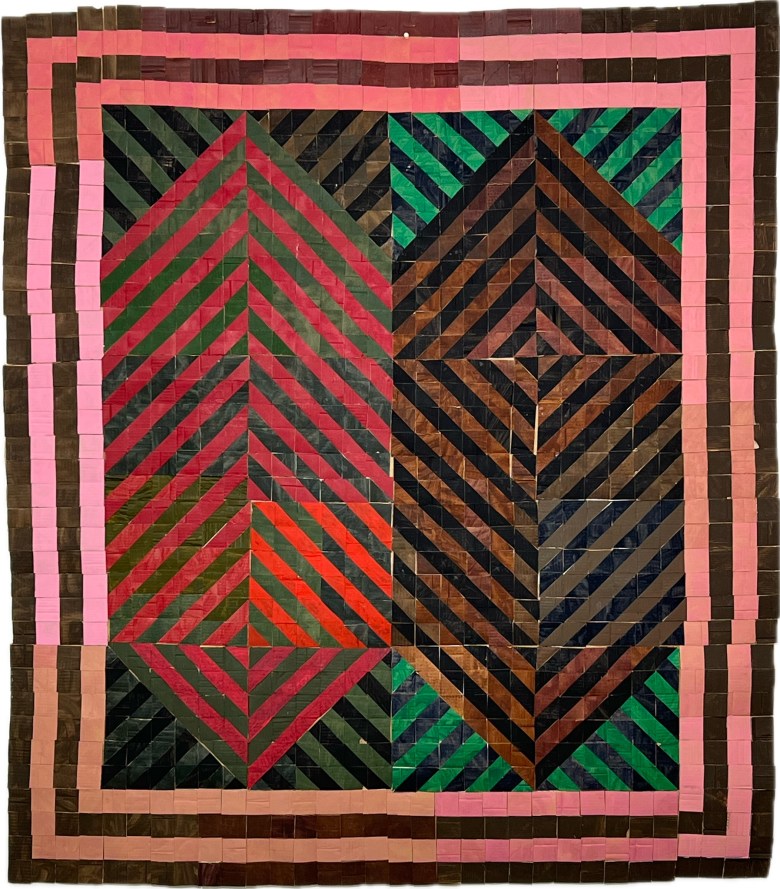
I’ve seen you described as a Renaissance man. Is that a description you embrace?
I mean, it sounds silly—it sounds like I should have a very frilly hat on—but I feel like what they mean is I’ve dabbled in a lot of different mediums. I mean, I love doing that. I enjoy them all. If I were to only do music, I think it would get really tiresome or tedious. It’s a great way to just sort of mix up your life—variety, that kind of thing. So, yeah, I guess I am. But no, I really don’t ever think about it. I’m just a busybody.
You sing a lot about animals, and you’re interested in nature, but it doesn’t seem like you’re interested in a “pure” idea of nature. In these paintings, too, the animals are kind of amalgamations of different things.
Yeah. They’re like a dream. In poetry, people include animals a lot because they’ve always represented a knowing creature in the world that is different than us—that is in connection with the world in a way that we are separate. So we’re always slightly jealous, and we hold them, and there’s a mystery around them that we feel left out [of]. So I love talking about animals or talking about our relationship with drawing animals, because they’ve always had a power to us. I’m talking on very basic levels. And I see that magic—that’s what I like to borrow from for my artwork.
Do you ever feel jealous of animals?
All the time. Hate putting on shoes, hate having to wear a coat. Just imagine if you didn’t have to do that.
This interview has been edited and condensed for clarity. Comment on it at arts@indyweek.com.
Support independent local journalism.
Join the INDY Press Club to help us keep fearless watchdog reporting and essential arts and culture coverage viable in the Triangle.

